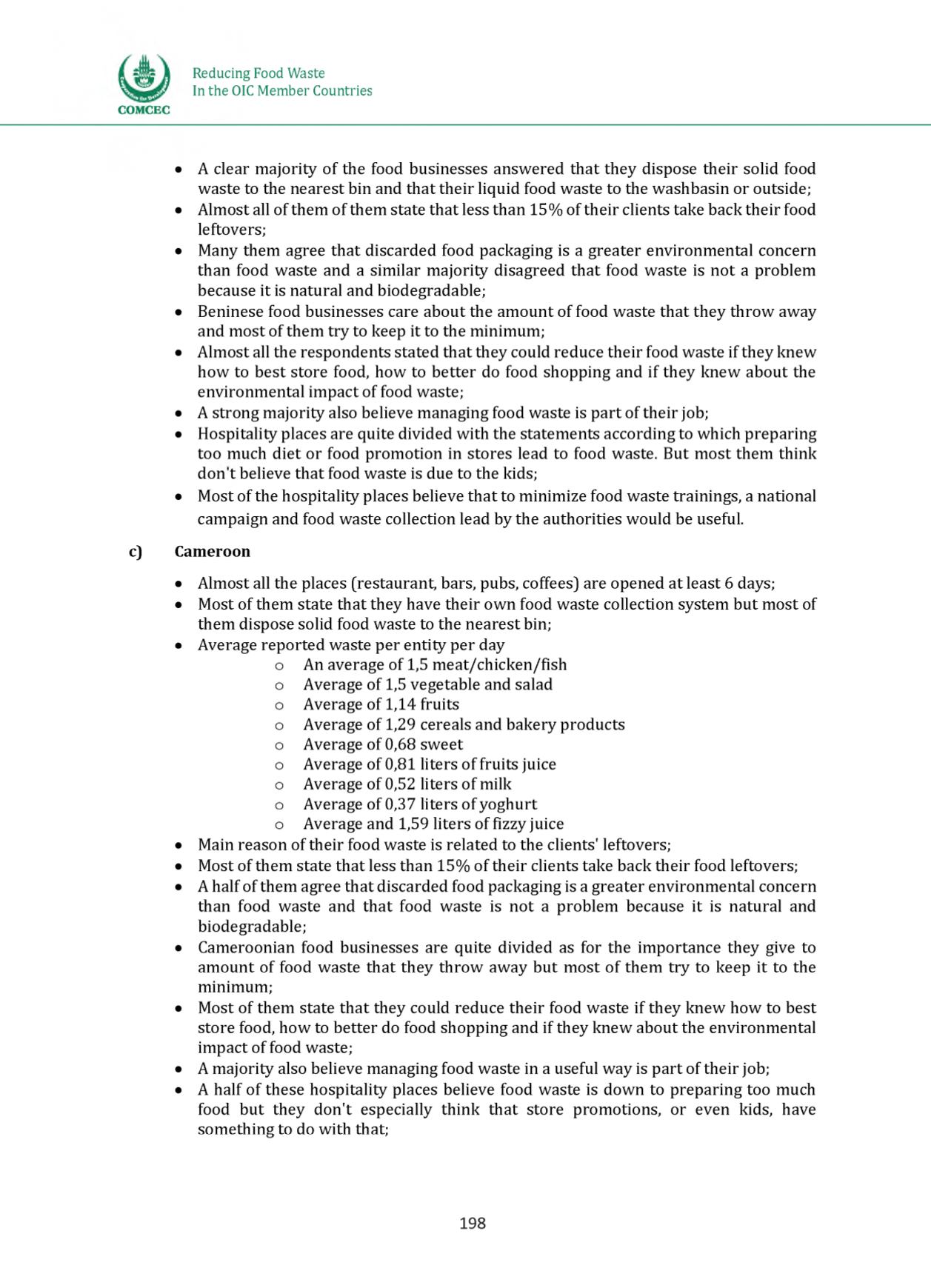

Reducing Food Waste
In the OIC Member Countries
COMCEC
• A clear m ajority o f the food businesses answered tha t they dispose their solid food
waste to the nearest b in and tha t their liq u id food waste to the washbasin or outside;
• A lmost all of them o f them state tha t less than 15% of their clients take back their food
leftovers;
• Many them agree tha t discarded food packaging is a greater environmental concern
than food waste and a sim ilar majority disagreed tha t food waste is n o t a problem
because it is natural and biodegradable;
• Beninese food businesses care abou t the am o u n t of food waste tha t they th row away
and m ost of them try to keep it to the m in im um ;
• A lm ost all the respondents stated tha t they could reduce their food waste if they knew
h ow to best store food, how to better do food shopping and if they knew abou t the
environmental im pac t of food waste;
• A strong m ajority also believe m anaging food waste is pa rt of their job;
• Hospitality places are quite divided w ith the statements according to which preparing
too much die t or food p rom o tion in stores lead to food waste. But m o st them th ink
do n 't believe tha t food waste is due to the kids;
• Most of the hospitality places believe th a t to m in im ize food waste trainings, a national
cam paign and food waste collection lead by the authorities w ou ld be useful.
c)
Cameroon
• A lmost all the places (restaurant, bars, pubs, coffees) are opened a t least 6 days;
• Most of them state tha t they have their ow n food waste collection system b u t m ost of
them dispose solid food waste to the nearest bin;
• Average reported waste per entity per day
o An average of 1,5 m eat/ch icken/fish
o Average of 1,5 vegetable and salad
o
Average of 1,14 fruits
o Average of 1,29 cereals and bakery products
o
Average of 0,68 sweet
o
Average of 0,81 liters o f fruits juice
o
Average of 0,52 liters o f m ilk
o
Average of 0,37 liters o f yoghurt
o Average and 1,59 liters of fizzy juice
• Main reason of their food waste is related to the clients' leftovers;
• Most of them state tha t less than 15% o f their clients take back their food leftovers;
• A ha lf of them agree tha t discarded food packaging is a greater environmental concern
than food waste and th a t food waste is n o t a p rob lem because it is natu ral and
biodegradable;
• Cameroonian food businesses are quite divided as for the importance they give to
am o u n t of food waste tha t they th row away b u t m ost o f them try to keep it to the
m in im um ;
• Most of them state th a t they could reduce the ir food waste if they knew how to best
store food, h ow to better do food shopping and if they knew abou t the environmental
im pac t of food waste;
• A majority also believe managing food waste in a useful way is pa rt of their job;
• A ha lf o f these hospitality places believe food waste is dow n to preparing too much
food b u t they don 't especially th ink tha t store prom otions, or even kids, have
something to do w ith that;
198
















